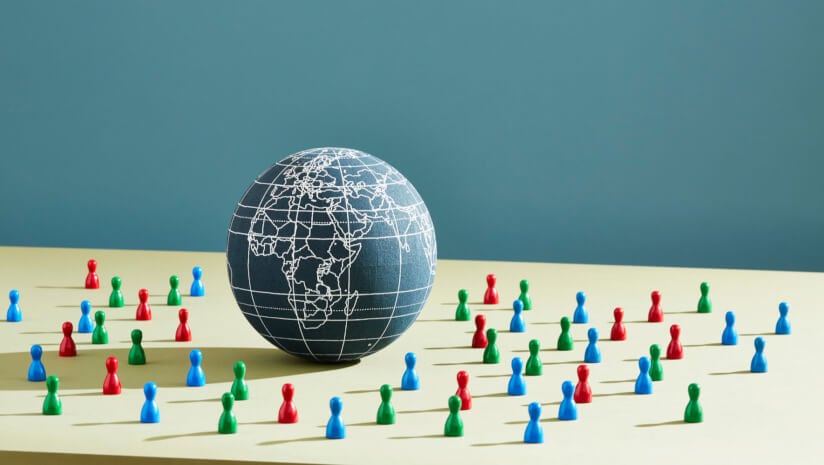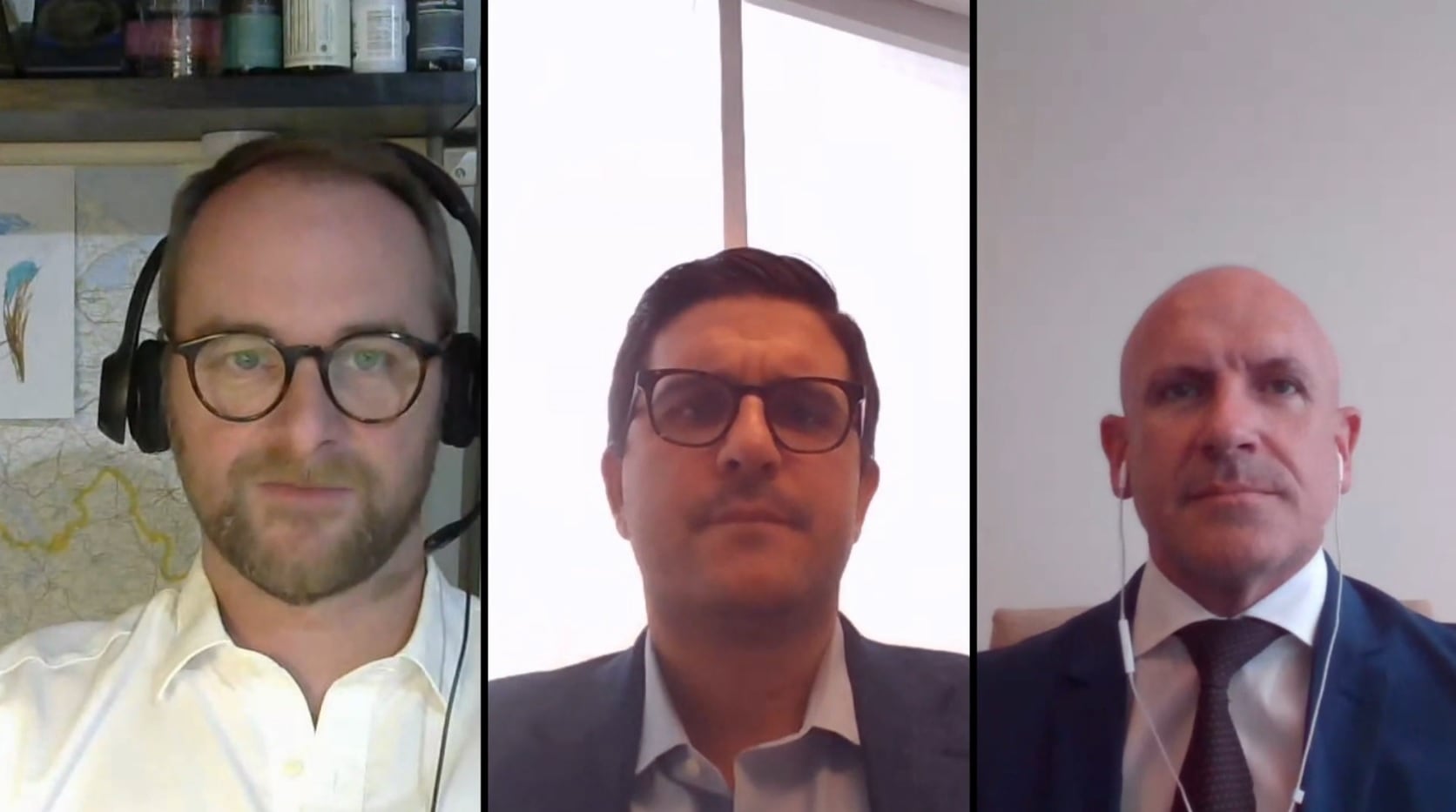Steve Quinn, a regulatory consultant who has worked in the food, beverage and supplement industries for 15 years—including roles at Ganeden, Nestlé and Novonesis—founded Blue Dot Ingredient Solutions to advise industry on regulation, business development and international markets, which he sees as a critical gap in the current international consulting landscape.
Among his clients are small ingredient manufacturers who have built momentum in the United States and are now looking to “take a bite” out of other markets, he said. They can do this with little investment up front, leveraging distributors and working with local partners.
“You don’t have to be a global company with a global footprint to have global sales,” he said.
In this interview with NutraIngredients, Quinn tackles this topic, along with acquisition and tariff challenges facing companies looking to expand abroad.
NutraIngredients: Why did you want to establish Blue Dot?
Steve Quinn: You have a lot of regulatory experts, and you have a lot of business development experts, and you have some international consultants, but you very rarely see all those capabilities in the same place.
I can’t be the guy who does everything for you in China, but I’ve been through the process. I know how to get your ingredients approved there. I can find you a distributor, and we’ll basically get you started in the market.
NI: Let’s start with tariffs. From your perspective as a consultant, how do you guide businesses in the current climate of reciprocal tariffs?
SQ: It has come up a handful of times where companies are asking about whether they should reallocate manufacturing. Are there loopholes? Are there ways something can technically be a U.S.-made product even if a lot of the work happens elsewhere? In general, I’m still advising clients not to do anything rash and see where [these tariffs] actually land. Is it worth recapitalizing and developing new manufacturing capabilities just yet inside the United States? The cost associated with that is so huge that in some cases it may be worth weathering the storm.
I don’t think that the tariffs are going to end up being nothing, but seeing how frequently they come, they go, they get rolled back, I still think that we’re waiting to see where this all shakes out. I’m certainly not advising people to rush off and build a new factory yet.
NI: So what do people do in the interim? With such volatility, how do you advise them to respond? If they’re not going to pack up and go elsewhere or establish a new facility, what do you tell them?
SQ: I think that right now you have to evaluate if there is local capacity available or if it makes more sense to just hang tight and perhaps pay the tariffs. There’s a real chance that they’d only be around for a handful of years, but until we know long term what it looks like, there’s not always an easy solution here. I know it’s not a satisfying answer. But the fact is, if you’re selling your finished products in the United States, there’s a certain amount of labor and a production premium that’s associated with an American-made product. And the same goes with the European-made products in a lot of cases.
I know that’s maybe not a super polite thing to say out loud, but there are some markets where if you can say ‘made with American products’ or ‘this is a Scandinavian product’, then consumers are willing to pay more for that. It may be worth reorganizing some of your manufacturing and some of your production if you think you can re-capture on that premium. However, it’s going to be a tough sell if you’re currently making your ingredients in India or particularly in China. Some of these places are especially being targeted by the tariffs. Companies are probably used to having a fair bit of margin and used to being able to offer that ingredient or that product at a competitive price. That may not be the case anymore.
It may look totally different six months from now or six weeks from now even.
NI: When you say there’s a premium associated with a Scandinavian brand, for example, does that also justify the increased cost for the end consumer? Are companies able to ‘sell’ that concept to consumers?
SQ: They will. For instance, in China, the Australian supplements are considered super premium. Is what they’re making any better than what they’re making in the domestic Chinese market? In a lot of cases, probably not, but there’s that perception of prestige. In China and a lot of these other markets, if you can say ‘Made in America’, you can charge a premium for it.
Then companies will need to decide if they’re going to play ball and roll the cost of tariffs into the price or if you want to make a statement and say ‘hey, these tariffs are why we’re charging you so much more.’ I think that a lot of the smaller companies are going to roll it into the costs.
NI: Besides tariffs, what are some of the other top three challenges that companies must face when they are trying to expand overseas?
SQ: First is that the regulatory environment in every country virtually is going to be different, and there’s very little reciprocity. In some of the smaller countries where they have very similar dietary habits and histories of use of certain foods and cultural considerations, there’s little reciprocity among countries, even in the European states where you have EFSA (the European Food Safety Authority) overseeing everything. Each of those member states can still have their own nuance on the regulation. I work with all kinds of ingredients now, but my main history is with probiotics. Some European countries are saying you can use the word ‘probiotic’, and you can make certain claims on supplements if they have probiotics in them. For ages, the rule was nobody in Europe could use the term probiotics. Now it’s kind of country by country.
The second challenge is distributors. If you’re a small company looking to get started, you’ll get some good time and attention with a distributor specific for the Philippines, one specific for Indonesia, one specific for Thailand, rather than going with a huge regional one. I think that companies sometimes get a little overwhelmed about how they are going to place these people all over the world. The process that I try to walk them through is that you don’t really have to. You find some distributors. You hire somebody to kind of manage the distributors, rather than having somebody on the ground in each country.
And then the third challenge is probably knowing where to prioritize. If the sole reason for your company’s existence is to be an acquisition target, then you have to get approved in India, Brazil, China, no matter what. But if that’s not the goal, then maybe the Brazilian market isn’t a good fit, and you want to look at in some other parts of South America. Also, in Japan there are certain food and health trends that are unique to that country, and if your ingredient fits in there, then you would prioritize Japan over China.
NI: Which country has been the most challenging for you to help your clients navigate?
SQ: I guess it’s anywhere the government is not used to dealing with the types of ingredients that you’re trying to get approved. It was a challenge getting BC30 (Ganeden) approved in China. The country obviously has food scientists. They know what a spore is. They’re not ignorant about microbiology. But we had to do a lot of talking about hygiene and about safety and how we were going to bring a spore into a food facility. It was something that just wasn’t commonly done in China, if at all. So anytime you have a situation where the regulators just aren’t used to something, I guess that’s probably the toughest one. I don’t know if there’s one country that I would want to call out as being the real problem child.
NI: Finally, how do you team up with other experts in this international arena?
SQ: If I do what’s right for my clients, then they’re going to have a better result and they’re going to recommend me in the future if I recommend them to specific experts rather than if I try to rack up a bunch of hours trying to figure out something somebody else could do faster and easier for them. I’m not going to trade that short-term gain at the expense of cultivating a long-term partnership.



